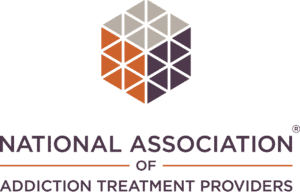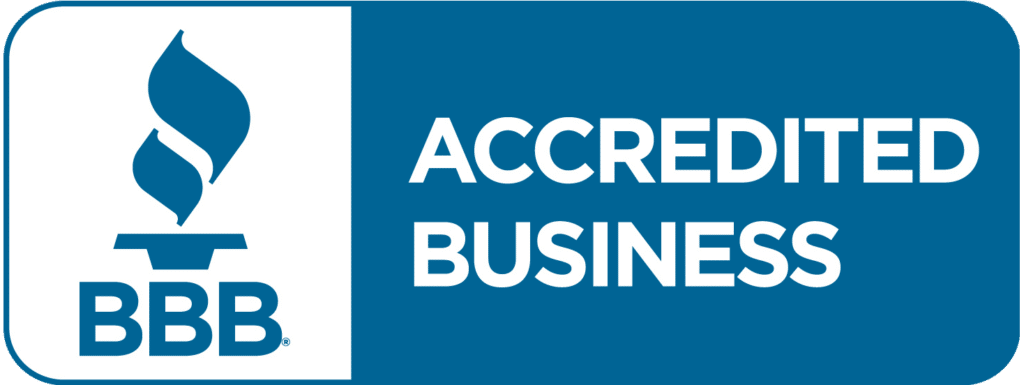Helping a Loved One with Addiction Steps to Take
Talking to a loved one about their addiction is never easy, but it’s one of the most important steps you can take. Approaching the conversation with empathy and understanding is key.
It can be overwhelming to support a loved one going through the long process of entering addiction treatment. You don’t know what to say, how to bring up the subject, or where to start. But you are not alone. Countless people have gone through this, and there is a way to help your loved one seek help.
This guide will help you understand addiction, recognize the signs, and give you practical steps to help your loved one look for treatment. We will also explain how you can support them through recovery and care for your mental well-being in that process.
Understanding the Signs of Addiction
Before you can help someone seek treatment, it’s essential to understand whether they’re struggling with addiction. Addiction can manifest in various ways—physically, emotionally, and behaviorally.

Behavioral Signs of Addiction
Behavioral changes are often the first indication that something is wrong. These signs may include:
| Secretive behavior | Lying, hiding substances, or being overly private about daily activities. |
| Neglecting responsibilities | Struggling to keep up with work, school, or personal obligations. |
| Social withdrawal | Distancing from family, friends, and once-loved activities. |
| Financial troubles | Unexplained spending, borrowing money frequently, or stealing to support their addiction. |
Physical Signs of Addiction
Addiction can cause visible changes in someone’s appearance. Watch out for:
| Sudden weight loss or gain | Substance abuse can disrupt appetite and metabolism. |
| Neglect of personal hygiene | A decline in self-care, such as not showering or wearing dirty clothes. |
| Frequent illnesses or injuries | Substance use can weaken the immune system, and physical injuries may be linked to intoxication or risky behavior. |
Emotional Signs of Addiction
Emotional instability is also a common symptom of addiction. Look for:
| Mood swings | Sudden mood changes, ranging from irritability to deep depression. |
| Increased anxiety or depression | Often, addiction and mental health issues go hand in hand. |
| Paranoia or confusion | Some substances can cause psychological side effects, leading to paranoid thinking or erratic behavior. |
Recognizing these signs is the first step in helping your loved one get treatment.
The Importance of Early Intervention
Addiction is a progressive disease, which means it often worsens over time if left untreated. The sooner your loved one can get help, the better their chances of recovery.
Why Early Intervention Matters
Early intervention can prevent further physical and emotional damage. Addiction can take a toll on the body and mind, leading to severe health complications, strained relationships, job loss, and even legal trouble. You can help your loved one avoid these long-term consequences by encouraging treatment early.
Additionally, addressing addiction sooner rather than later improves the likelihood of a successful recovery. The longer the addiction continues, the more entrenched it becomes, making it harder to break the cycle without professional help.
How to Approach the Conversation About Addiction Treatment?
Prepare for the Conversation
Before you sit down with your loved one, it’s essential to prepare. Here are some steps to take:
| Do your research | Learn about addiction and treatment options. Being informed will help you have a more productive conversation. |
| Choose the right time | Pick a moment when your loved one is sober and relatively calm. A private, quiet setting is ideal. |
| Be ready for resistance. | Many people in the throes of addiction deny they have a problem. Prepare yourself for potential pushback and be patient. |
Approach with Empathy, Not Judgment
When talking to your loved one, focus on expressing concern and support rather than blaming them. Here’s how you can approach the conversation:
Use “I” statements | For example, you could say, “I’ve noticed you’ve been struggling lately, and I’m really worried about you.” This is less accusatory than saying, “You’ve been doing this wrong,” and it may prevent them from becoming defensive. |
| Acknowledge their feelings | Validate their emotions without minimizing them. They may feel scared, ashamed, or angry, and it’s important to recognize those feelings. |
Offer support | Let them know you’re there to help them through the process, whether finding a treatment center or simply listening. |
Provide Supportive Resources
Once the conversation has started, offer resources that can help your loved one take the next step:
| Share information about local rehab centers or treatment programs | Have brochures or website links ready. |
| Offer to help make the call | Sometimes, making that initial step can feel overwhelming. Offer to be by their side as they call a treatment center. |
| Provide hotline numbers | Organizations like SAMHSA (Substance Abuse and Mental Health Services Administration) provide free, confidential helplines for those in need of treatment. |
Common Challenges in Getting a Loved One to Accept Help
Even with the best intentions and a well-thought-out conversation, your loved one may resist seeking help. Here’s how to address some common challenges.
Overcoming Denial and Resistance

Denial is one of the most significant barriers to seeking treatment. If your loved one is in denial about their addiction, they may not see the need for help. Here’s how to manage this challenge:
| Stay calm and patient | Arguing or pressuring them will make them more resistant. |
| Provide examples | Gently point out specific behaviors or incidents that have caused concern. |
| Offer time | Sometimes, the first conversation won’t be enough. Give them space to process the idea of treatment and be willing to revisit the topic later. |
Setting Boundaries if Needed
While being supportive is essential, you also need to protect your well-being. Setting clear boundaries can help you avoid enabling their addiction and may even motivate your loved one to seek help.
| Establish consequences | For example, you may need to limit financial support or refrain from covering up for them at work or with other family members. |
| Stick to your boundaries | Once you set a boundary, it’s essential to follow through. Consistency shows your loved one that you’re serious about them seeking help. |
Exploring Treatment Options Together
When your loved one is ready to seek treatment, exploring their options together is helpful. Addiction treatment comes in many forms, and finding the right fit can make all the difference.
Types of Addiction Treatment Programs
Inpatient Rehab | Inpatient or residential treatment involves staying at a facility for an extended period, typically 30 to 90 days. It provides an intensive level of care, including medical supervision, therapy, and a structured environment free from triggers. |
Outpatient Programs | Outpatient treatment allows individuals to live at home while attending sessions during the day or evening. This option is less intensive, but may be ideal for those with mild addictions or strong support systems at home. |
Detox Centers | Detoxification, or detox, is the process of safely removing substances from the body. Detox centers provide medical supervision to manage withdrawal symptoms, making it the first step for many people entering recovery. |
Therapy and Counseling | Therapy plays a critical role in addiction recovery. Individual counseling helps address the emotional and psychological aspects of addiction, while group therapy provides support from others who are facing similar challenges. |
Finding the Right Treatment for Your Loved One
The best treatment option depends on your loved one’s needs:
| Severity of the addiction | Inpatient programs are generally recommended for severe addictions, while outpatient programs may work for those with milder cases. |
| Co-occurring mental health disorders | If your loved one has both a substance use disorder and a mental health condition, look for a dual-diagnosis program that treats both issues simultaneously. |
| Comfort level | Some people do better in structured environments, while others may prefer the flexibility of outpatient care. Work with your loved one to find the right program for them. |
Supporting Your Loved One During Treatment
Once your loved one enters treatment, your support remains crucial. Here’s how you can stay involved and provide encouragement during this phase.
Stay Involved in Their Treatment Plan
Many treatment programs encourage family involvement. Here are some ways you can participate:
| Attend family therapy sessions | These sessions help families heal together and provide tools for communicating more effectively. |
| Educate yourself about addiction | Understanding the disease of addiction can help you empathize with what your loved one is going through. |
| Be available for support | Let your loved one know you’re there for them, but also give them space to focus on their recovery. |
Be Patient During Their Recovery
Recovery is not a quick or linear process. Your loved one will have good days and bad days. Here’s what to keep in mind:
| Expect setbacks | Relapse is common, but it doesn’t mean failure. If your loved one experiences a setback, offer encouragement without judgment. |
| Celebrate small victories | Recovery is made up of many small wins. Acknowledge and celebrate them, whether attending a therapy session or completing a month of sobriety. |
How to Take Care of Yourself While Supporting a Loved One?
Getting caught up in your loved one’s recovery is easy, but you need to take care of yourself too. Here’s how to avoid burnout and ensure you’re mentally healthy enough to support them.
Avoiding Caregiver Burnout
Supporting someone through addiction can be exhausting. Make sure to prioritize your mental health:
| Set boundaries | While being there for your loved one is essential, don’t neglect your needs. |
| Seek support for yourself. | Consider attending support groups for family members of people with addiction, such as Al-Anon or Nar-Anon. Talking to others in similar situations can be incredibly helpful. |
| Practice self-care | Engage in activities that help you recharge, whether exercising, reading, or spending time with friends. |
FAQs
How do I convince someone to go to rehab if they don’t think they have a problem?
Convincing someone to seek help when they’re in denial can be difficult. Start by expressing your concern in a non-judgmental way. Provide specific examples of how their behavior has changed and offer resources for treatment, but be patient. They may need time to accept the problem.
What should I do if my loved one refuses help?
If your loved one refuses help, it’s essential to set boundaries. You can’t force them into treatment but can limit enabling behaviors. Continue to express your concern and offer support when they’re ready to seek help.
Is intervention necessary?
An intervention can be helpful in some cases, especially if your loved one resists seeking help. A professional interventionist can guide the process, ensuring the conversation is productive and everyone remains calm.
What are the different types of addiction treatments available?
There are several types of addiction treatment programs, including inpatient rehab, outpatient programs, detox centers, and therapy. The right option depends on the severity of the addiction and your loved one’s specific needs.
How can I support someone who’s in rehab?
You can support your loved one in rehab by staying involved in their treatment plan, attending family therapy sessions, and offering encouragement. It’s also important to be patient and understand that recovery is a long process with ups and downs.
























